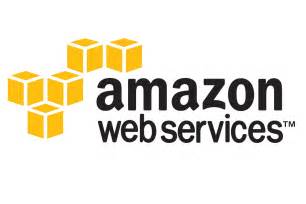Google Cloud Platform
Cloud Storage
It is Storage as a Service. Cloud Storage is web service that is provided by Google which allows user to store data. The user can store any size of data. There are the numerous use cases like storing data, serving website contents etc.which can be considerd while using Cloud Storage.
Key Terms
Projects
When you start with Google Cloud Platform, you must create a project in your account before launching a resouce. All the resources belong to a specific project.
Buckets
User store their data in Google Cloud Storage by creating Buckets. You can assume Buckets like a folder, but you cannot have nested Buckets. Buckets allow you to organize your data and access controls.
When creating buckets you have to specify a bucket name, storage class and geographic locations.
Buckets Names
Bucket names must follow the DNS naming conventions. Bucket name must be unique within Google Cloud Storage namespace.
Buckets Labels
Using Bucket Labels you can group your buckets with other Google Cloud Services.
Objects
When you upload a file in the bucket, that file is called Objects. Cloud Storage treats all types of file like Objects. Objects metadata and object data are the two components of Object. That file you have uploaded is called object data. Name-value pairs are used to get information about the object. Collection name-value pair is called object metadata.
Objects Names
Each object has a name and it is stored as metadata information. Unicode character is used to name an object and it can be up to 1024 bytes.
Generation’s number
When you upload an object to the bucket then Google assign a generation’s number to that object. When you rewrite the object, new generation number is assigned to the objects.
Storage Class
When we create a bucket in Cloud Storage, you must specify the default storage class for that bucket. Cloud storage provides you the different storage class. Storage Class are :
- Multi-Regional Storage
- Regional Storage
- Nearline Storage
- Goldline Storage
Multi-Regional Storage
When you choose Multi-Regional storage, Cloud storage replicates your data into different regions. It is mostly costs more than other storage class. It provides 99.95% availability SLA.
Regional Storage
Regional storage Cloud storage replicates your data into different availability zones. It is cheaper than other storage class. It provides 99.9% availability SLA.
Nearline Storage
This storage class should be used when you do not need to access your data frequently. This is much cheaper than regional storage. It provides 99.0% availability SLA. There is 30-day minimum storage duration.
Goldline Storage
This storage class should be used when you access your data once a year. This has the lowest cost per GB. It provides 99.0% availability SLA. There is 90-day minimum storage duration.
Must Read Artcile
How to create Bucket in Google Storage
In this tutorial we are going to create a bucket in Google Cloud.
How to upload files in Google Storage
In this tutorial we are going to upload a file in the Google Storage Bucket.
How to create folder in Google Storage
In this tutorial we are going to create a folder inside Bucket.
How to make a object public in Google Storage
In this tutorial we are going to make a object public in Google Storage.

How to delete a Snapshot
In this tutorial we are going to delete a Snapshot.

How to delete Static IP in Google Cloud
In this tutorial we are going to delete static IP in Google Cloud.

How to disassociate Static IP form VM instance in Google Cloud
In this tutorial we are going to disassociate static IP form VM instance in Google Cloud.

How to launch a VM Instance using Snapshots in Google Cloud
Before you start installing WordPress on VM instance on Google Cloud. You must log in into the machine.

How to launch a VM instances in Google Cloud
In this tutorial we are going to launch a Compute Egine instance.

How to launch a VM Instance using Snapshots in Google Cloud
Before you start installing WordPress on VM instance on Google Cloud. You must log in into the machine. You can launch a VM Instance on Google Cloud using this tutorial. After launch of machine log in into the machine using SSH. If you do not know how to SSH in VM instance you can follow this tutorial.

How to launch a VM Instance using Snapshots in Google Cloud
In this tutorial we are going to launch a VM using existing snapshot.

How to reboot VM instance in Google Cloud
In this tutorial we are going to reboot VM instance in Google Cloud.

How to Reserve Static IP address in Google Cloud
In this tutorial we are going to allocate a static IP.

How to SSH in your instance in Google Cloud
In this tutorial we are to SSH in Compute Engine Instance.

How to stop VM instance in Google Cloud
In this tutorial we are going to stop VM instance in Google Cloud.

How to Terminate VM instance in Google Cloud
In this tutorial we are going to Terminate VM instance in Google Cloud.

How to assign Static IP to VM Instance in Google Cloud
In this tutorial we are going assign static IP to VM Instance.
